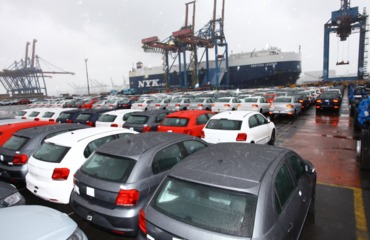São Paulo – The efforts of automakers in Brazil to expand the scope of the destinations for their cars have put the Arab countries back on the radar of the domestic auto industry. According to data from the Secretariat of Foreign Trade (Secex) that were compiled by the Arab Brazilian Chamber of Commerce, exports of Brazilian cars to member countries of the Arab League increased by 38% from January to October compared with the same period of last year. The trade generated over USD 300 million.
The highlight is Qatar, responsible for more than a third of this amount: the country imported USD 105.3 million against USD 4.2 million in the same period of last year. Saudi Arabia, the second largest destination for Brazilian auto, increased its orders by 24% to USD 66.9 million.
Although somewhat modest, the share held by Arab countries in exports of Brazilian vehicles went from 2.6% in 2015 to 3.3% this year.
“The companies are putting on a great effort to open new markets,” said Antonio Megale, president of the National Motor Vehicle Manufacturers Association (Anfavea) in a press conference this Tuesday (6). “This showed up in November results, the best month of auto exports since August 2013 and the best November since 2005.”
In volume, Brazilian shipments totaled 57,100 units in November, up 56.4% in comparison to the same month of last year and 54.7% over October. Revenues with exports climbed 25.8% in the month compared to November 2015 and 13.4% over October to USD 1.08 billion.
From January to November, revenues from exports totaled USD 9.7 billion, up 0.6% over the same period in 2015. In volume, it surged 23.4% with 457,800 vehicles exported. “We are heading towards our forecasts of exporting 500,000 units this year,” said Megale.
The global market was back on the radar of automakers for two reasons: the first being the retraction of domestic sales – this year, the demand for vehicles in the domestic market declined 21.2% from January to November to 1.85 million units. The other one was the depreciation of the real, which made the price of vehicles produced in Brazil more attractive.
Megale hopes for domestic sales to pick up in 2017. Although Anfavea’s president hasn’t made public his forecasts for next year, he said that expectations are for a single digit increase, with a faster improvement in the last six months and a strong market outlook for 2018.
The positive viewpoint also applies to shipments: “In addition to the efforts of the automakers in searching for new markets, the government is contributing with negotiations for bilateral trade agreements with other markets.”
*Translated by Sérgio Kakitani




